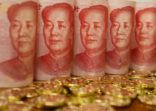Weatherston, who took over the firm’s Japanese Equity Fund in June 2016, seeks companies he believes have strong growth potential over the next five-to-20 years, he said during a media briefing in Hong Kong last week.
The growth companies he invests in also have government support, he added.
One growth theme is robotics. “As a country that is rapidly running out of labour, Japan is at the forefront of deploying more robotic technology,” he said.
Japan ranked third globally for the largest sales of industrial robots in 2015, according to the International Federation of Robotics’ 2016 annual report. The number of units sold grew by 20% to 35,000 units from the previous year, and average annual sales growth is forecast to be 5% to 2019.
Besides robotics, Weatherson is also investing in fintech, he said. Citing China and India’s growing fintech industry, he said “Japan is going to be there, too.”
Japan’s regulators, like their counterparts in Hong Kong and Singapore, are trying to push fintech development.
For example, Japan’s Financial Services Industry last year abolished a law that prevented banks from owning more than 5% of a technology company, according to Financial Times report. As a result, the biggest Japanese banks are looking to pour hundreds of millions of dollars into fintech firms, the report said.
Weatherston is also looking at healthcare advances, particularly in regenerative medicine. Given Japan’s aging population, demand for new pharmaceuticals and medical equipment and services are set to increase. Japan has been at the leading edge of healthcare R&D, he added.
“We are going to see some surprising revolutionary drugs coming out from Japan,” he said, mentioning drugs under development that could be injected into a stroke victim to restore proper functioning of the brain.
Another area is self-driving cars, which includes a wide array of companies specialising in key components such sensory or mapping technology.
Weatherston did not mention which sectors in the portfolio he is overweight or underweight. However, data from FE shows that the biggest changes in his portfolio are increases in the telecom, media & technology (TMT) and healthcare sectors.
In the five-month period of the end of December to the end of May, Weatherston increased TMT allocation to 19.2% from 12%, while healthcare increased to 7.7% from 4.1%.
View from the top
Weatherston believes Japanese equities are supported by a positive macroeconomic backdrop.
Japan’s fundamental story is good, he said, citing the Nikkei Index passing the 20,000 mark earlier this month. The last time the Nikkei 225 Index was at the 20,000 mark was in August 2015, according to Bloomberg data.
Weatherston also believes that Japan is undervalued versus other developed markets. For example, the Topix Index’ 12-month forward earnings multiple is at 15.4 versus the S&P 500’s 17.6.
On the regulatory front, the government has pushed transformation of corporate governance by introducing a stewardship code and a corporate governance code. Company directors in Japan now are required to act on behalf of shareholder interests, which is something uncommon in Asia, he said.
The three-year performance of the Old Mutual Japan Equity Fund versus its benchmark, according to FE data.

The fund NAV and benchmark index have been converted to US dollars for comparison purposes.
















